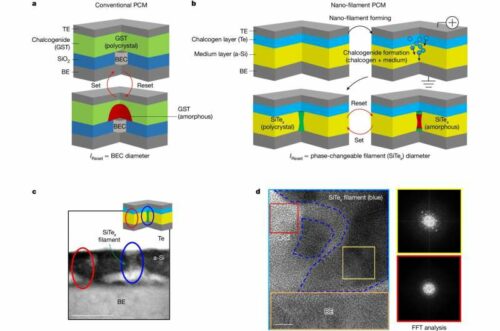With ultra-low power consumption and reduced manufacturing costs, this development promises to redefine the landscape of memory solutions and pave the way for next-generation AI hardware.

A team of researchers from KAIST’s School of Electrical Engineering, led by Professor Shinhyun Choi, has introduced a new phase-change memory device poised to revolutionize the field of memory technology and neuromorphic computing. This innovation is distinguished by its ultra-low power consumption and low processing costs, making it a strong candidate to replace current memory solutions like DRAM and NAND flash memory.
Traditional phase change memory devices, while offering the benefits of both DRAM’s speed and NAND flash memory’s non-volatility, have been hindered by their high power demands and costly production processes, particularly when scaled down. These challenges have limited their application in creating practical large-capacity memory products or in the development of neuromorphic systems, which aim to mimic the human brain’s functionality.
Addressing these critical issues, Professor Choi’s team has successfully engineered an ultra-low–power phase change memory device through an innovative method. This approach involves electrically forming a nanometer-scale phase changeable filament, bypassing the need for expensive and complex fabrication processes associated with traditional methods. Remarkably, this device operates with 15 times less power than its predecessors fabricated using sophisticated lithography tools.
The significance of this advancement extends beyond its immediate practical applications. By merging the speed of DRAM with the non-volatile nature of NAND flash memory, phase change memory is emerging as a leading solution for future memory and computing technologies. This new device, in particular, opens the door to high-density three-dimensional vertical memory architectures and neuromorphic computing systems, offering a versatile platform for exploring a wide range of materials.
The team is optimistic about the potential of this research to lay the groundwork for future advancements in electronic engineering. With its promise of significantly reduced manufacturing costs and enhanced energy efficiency, this phase change memory device is expected to pave the way for innovative applications in the realms of storage and computing, marking a significant step forward in the quest for next-generation AI hardware.







